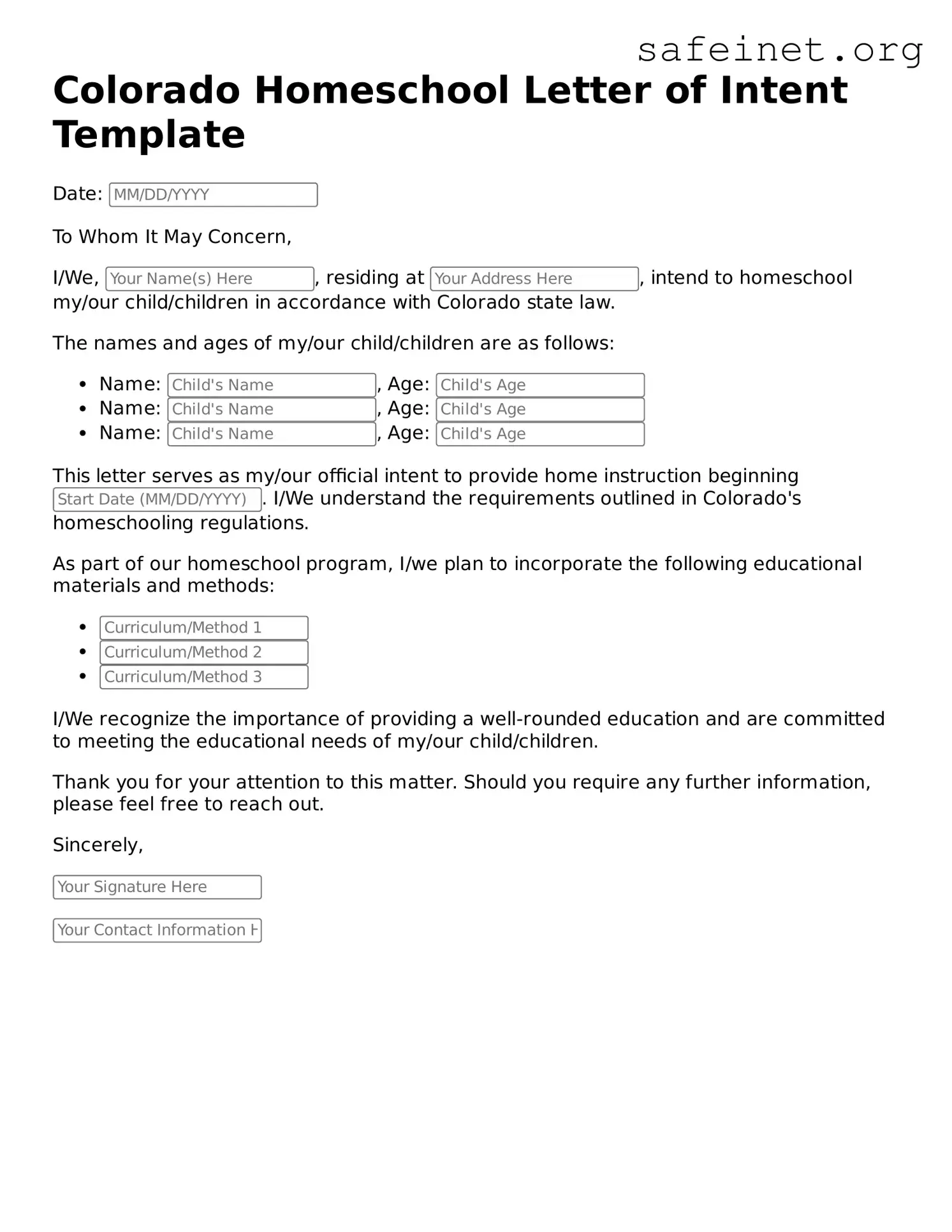Valid Homeschool Letter of Intent Template for the State of Colorado
The Colorado Homeschool Letter of Intent is a document that parents must submit when they decide to educate their children at home. This form notifies the local school district of the family's intention to provide a homeschool education and outlines the basic requirements. Understanding and completing this form is essential for a smooth homeschooling experience in Colorado.
If you are ready to take the next step in your homeschooling journey, fill out the form by clicking the button below.
